Overview
This article offers vital insights into the VA rating process for erectile dysfunction (ED) among veterans. We understand that navigating this process can be challenging, and it's crucial to grasp the rating criteria and how ED may connect to service-related conditions.
Veterans may secure a higher disability rating by demonstrating that their ED is linked to conditions such as PTSD. This connection is essential, and we want to ensure you have the information needed to advocate for your needs.
Additionally, we provide guidance on the application process and highlight available resources. You are not alone in this journey; we’re here to help you effectively navigate your claims and find the support you deserve.
Introduction
Navigating the complexities of VA disability claims for erectile dysfunction can feel overwhelming for many veterans. We understand that the intricacies of the VA rating system and the potential connections to service-related conditions are crucial for securing the benefits you deserve.
It's common to grapple with misconceptions and procedural challenges, leading to the important question: how can you effectively advocate for yourself in this daunting process?
This article delves into key insights and strategies designed to empower you, the former service member, to tackle your claims with confidence and clarity.
Turnout: Streamlining VA Disability Claims for Erectile Dysfunction
Turnout is transforming the way former service members apply for disability benefits related to their erectile dysfunction VA rating. We understand that this process can often feel intricate and daunting. By harnessing AI technology, Turnout simplifies the often overwhelming procedure of managing VA requests. Our platform offers tailored support, ensuring that you receive prompt updates and assistance throughout your application journey.
This streamlined approach not only enhances efficiency but also empowers former service members to take control of their requests, making the process feel less intimidating and more achievable. Remember, Turnout is not a law firm and does not provide legal advice. Instead, we utilize trained nonlawyer advocates to assist with claims, ensuring that veterans have access to knowledgeable support without the need for legal representation. You are not alone in this journey; we're here to help.
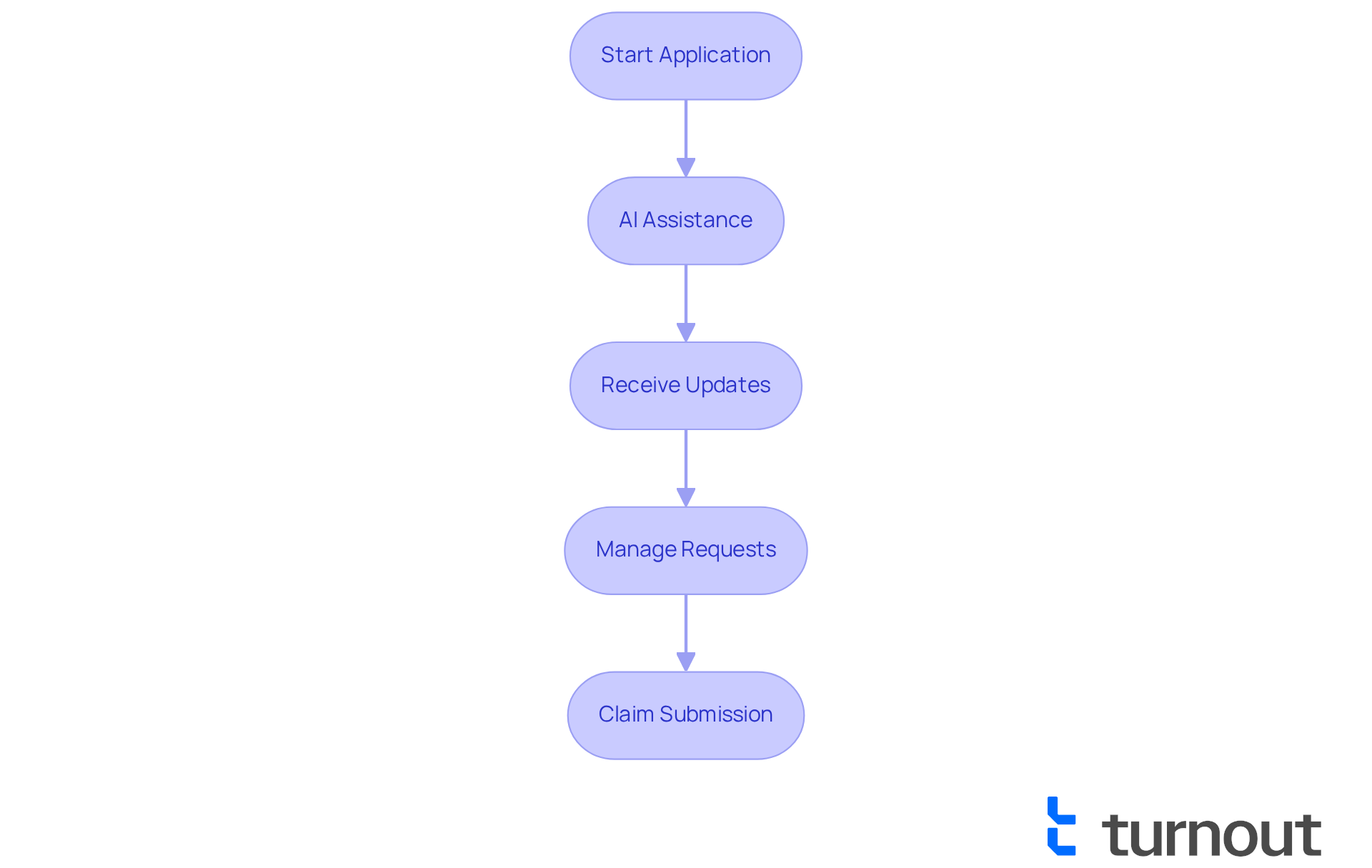
VA Disability Rating Criteria for Erectile Dysfunction Explained
We understand that dealing with sexual performance issues can be challenging. The VA evaluates these concerns under Diagnostic Code 7522, usually assigning an erectile dysfunction VA rating of 0% unless there is a physical deformity or other qualifying conditions.
It's important for veterans to demonstrate that their erectile dysfunction VA rating is connected to their military service or a service-related condition. Grasping these criteria is essential for former service members, as it directly influences their eligibility for benefits and the erectile dysfunction VA rating that may affect the compensation they receive.
Remember, you are not alone in this journey, and we're here to help you navigate these complexities.
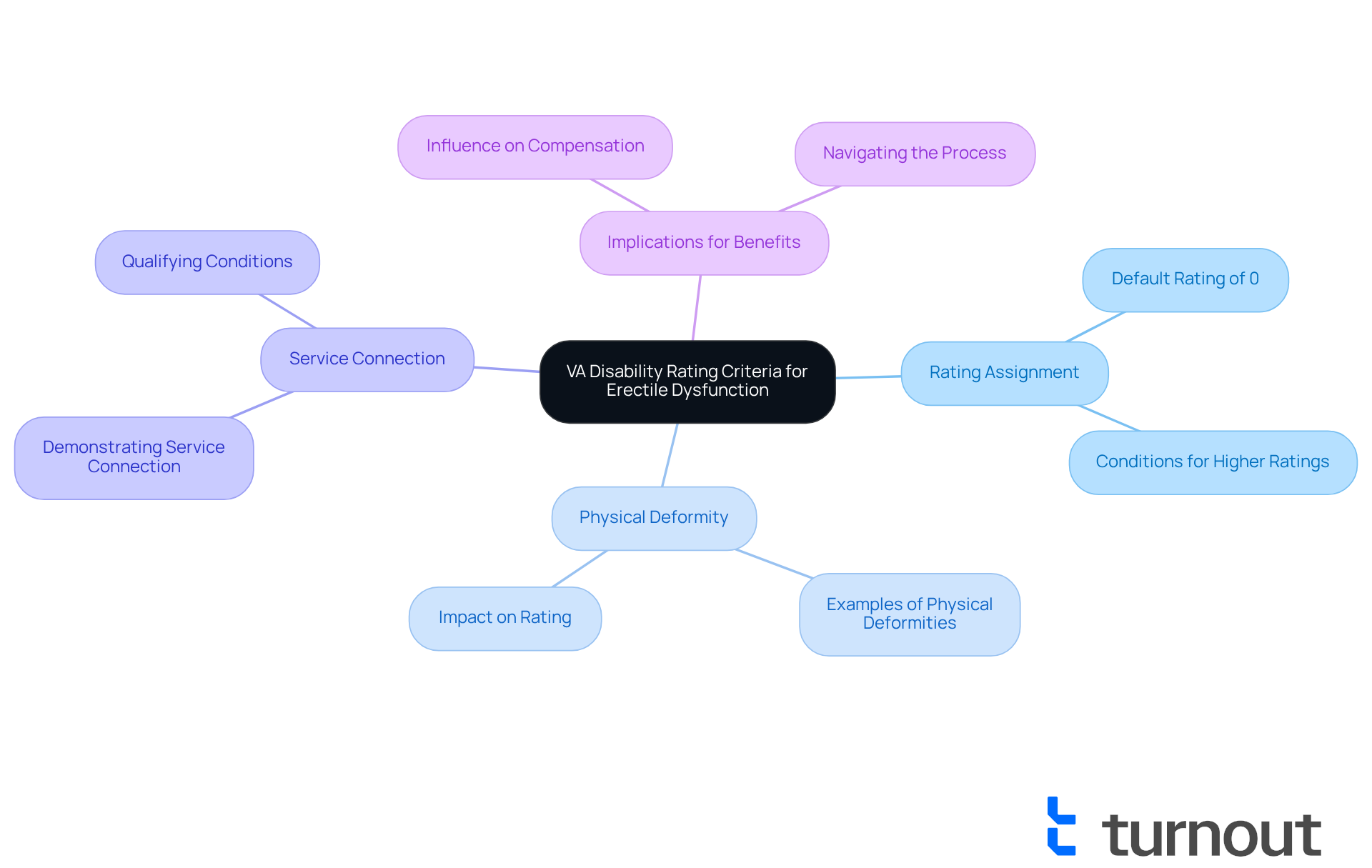
Erectile Dysfunction as a Secondary Condition: Impact of PTSD on VA Ratings
Erectile issues (ED) are often recognized as a secondary condition linked to post-traumatic stress disorder (PTSD), a diagnosis that affects many former military personnel. Understanding the connection between ED and PTSD is vital for these individuals as they pursue an erectile dysfunction VA rating. This relationship allows former service members to utilize their primary service-related issues to bolster their claims for sexual health problems, potentially leading to higher compensation.
Research indicates that male combat participants diagnosed with PTSD report erectile issues at significantly higher rates than those without mental health diagnoses. In fact, studies show that approximately 85% of male combat veterans with PTSD experience some form of sexual impairment. This statistic underscores the importance of recognizing the relationship between mental well-being and sexual health, especially in the context of VA applications.
Veterans who can demonstrate that their erectile dysfunction VA rating stems from PTSD may qualify for a higher disability rating. A strong nexus letter linking these two conditions is crucial, as it provides the necessary medical evidence to support their request. Additionally, individuals rated between 0% and 90% who feel overwhelmed or discouraged in their claims process may benefit from specialized programs designed to help them navigate the complexities of the VA system. Turnout offers tools and services that assist former service members in understanding and maneuvering through these processes, ensuring they receive the benefits they have earned.
There are numerous instances of former service members successfully obtaining increased disability ratings for conditions like erectile dysfunction VA rating as a secondary issue related to PTSD. These cases highlight the potential for former service members to secure the compensation they deserve, particularly when they can effectively link their sexual health challenges to their service-related mental health concerns. By grasping the nuances of their situations and the claims process, former service members can advocate for themselves more effectively, ensuring they receive the benefits they have earned, with the support of resources like Turnout. Remember, you are not alone in this journey; we are here to help.
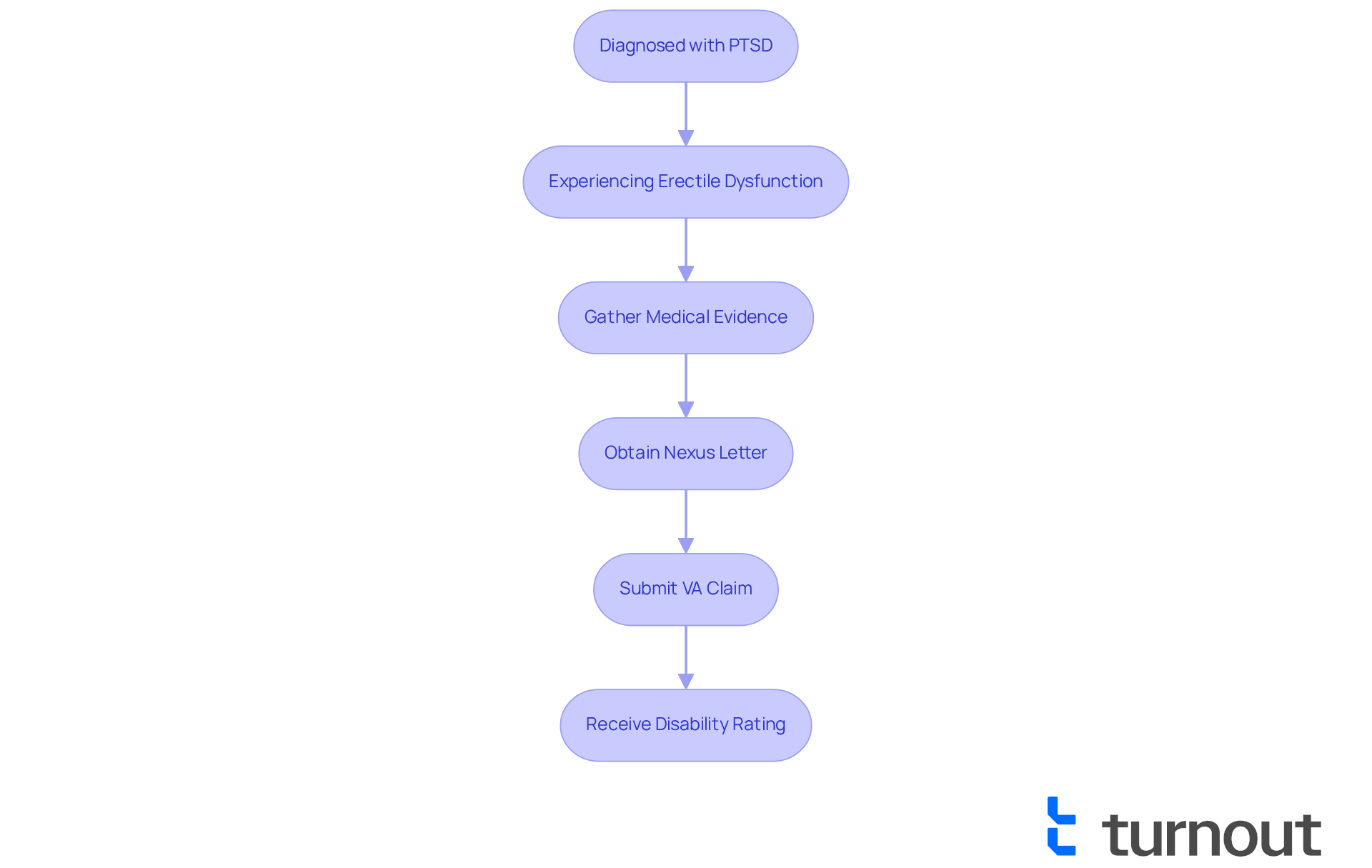
Steps to Apply for VA Disability Benefits for Erectile Dysfunction
If you're a veteran seeking VA disability benefits for sexual health issues, we understand that the process can feel overwhelming. Here are some essential steps to guide you through:
- Gather the necessary medical documentation, including a formal diagnosis to support your erectile dysfunction VA rating.
- Complete VA Form 21-526EZ, the application for disability compensation.
- Submit your application along with all supporting documents to the VA.
- Attend any required Compensation and Pension (C&P) examinations to assess your condition.
- Consistently observe the status of your request and respond swiftly to any inquiries from the VA for more information.
It's important to note that approximately 30% of initial VA disability requests are rejected annually, often due to common documentation mistakes. However, many veterans who are initially denied ultimately receive benefits through the appeals process. We encourage you to ensure that your application is thorough and complete to avoid unnecessary delays.
Common reasons for denials include missing evidence that links your condition to service and incomplete applications. Many former service members have shared their experiences, emphasizing the importance of effective communication and promptly providing evidence to strengthen their requests.
Recent updates to the VA Form 21-526EZ application process have streamlined submissions, making it easier for veterans like you to navigate the system effectively. Remember, you are not alone in this journey; we're here to help you every step of the way.

Essential Documentation Needed for VA Disability Claims for Erectile Dysfunction
We understand that navigating the process of applying for assistance with male sexual health issues, such as the erectile dysfunction VA rating, can be challenging for veterans. To support you in this journey, it's essential to submit several important documents:
- A medical assessment of sexual health issues from a qualified healthcare professional.
- Evidence linking the condition to military service or a service-connected disability.
- Treatment records and any prescribed medications.
- A completed VA Form 21-526EZ.
Ensuring that all documentation is thorough and accurate is crucial for a successful claim. Remember, you are not alone in this process, and we're here to help you every step of the way.
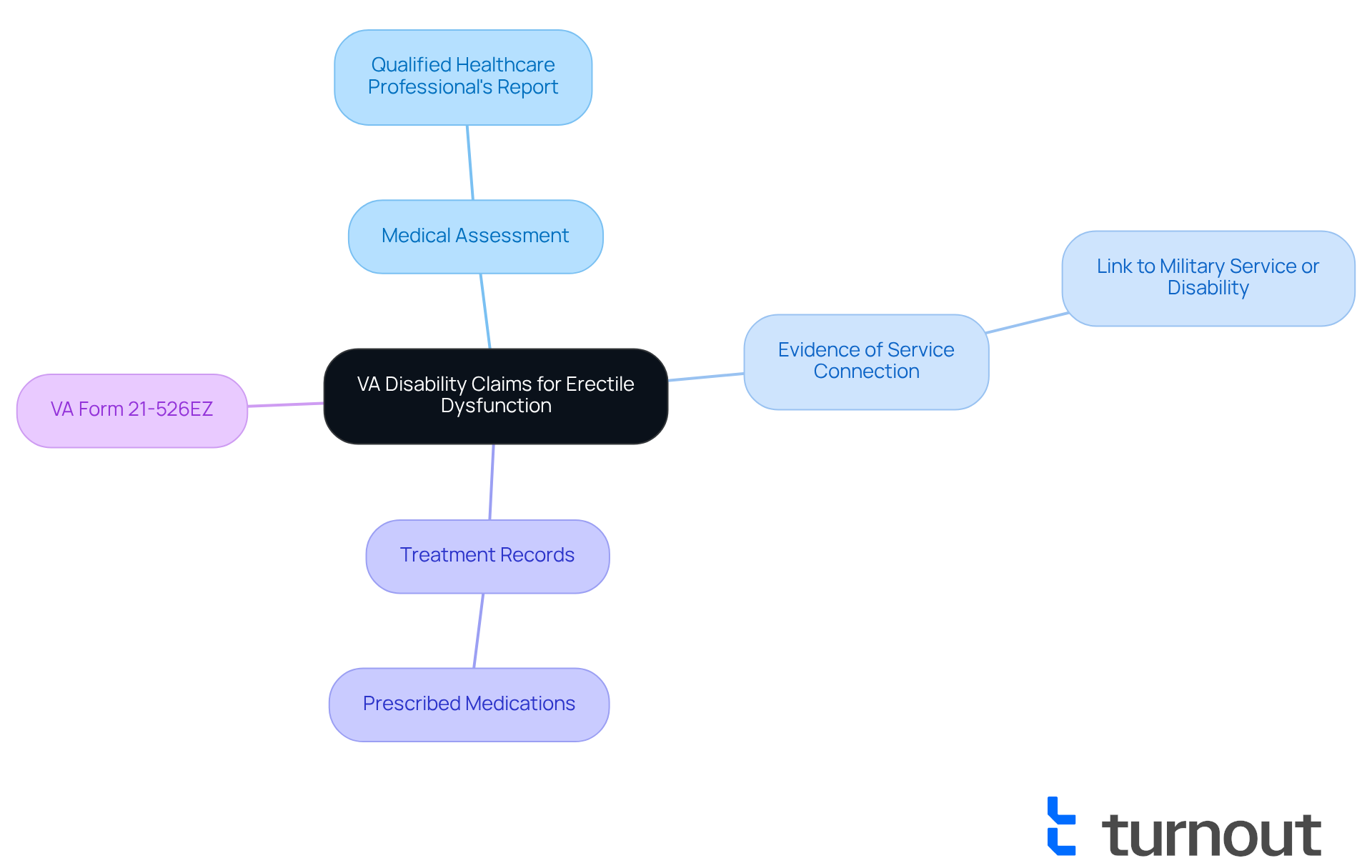
VA Ratings Percentages for Erectile Dysfunction: What to Expect
We understand that navigating the VA rating system can be challenging, especially regarding the erectile dysfunction VA rating. Typically, the VA assigns an erectile dysfunction VA rating of 0% for impotence unless there are other qualifying factors, such as penile deformity or the removal of the glans. However, if sexual health issues are linked to other service-related conditions, you may be eligible for an increased rating related to erectile dysfunction VA rating. For instance, a 20% rating may be granted for conditions like the removal of the glans or physical deformities that prevent erection, while a 30% rating can apply in more severe cases.
Comprehending these ratings is essential, as they directly influence the compensation you may receive. For 2025, Special Monthly Compensation (SMC) Level K offers an extra $136.06 each month for individuals with sexual health issues related to service-connected conditions, particularly for loss of use of a creative organ, even at a 0% rating.
Many veterans have shared their experiences, revealing that the application process can be difficult due to inconsistencies in how the VA implements rules regarding sexual health issues. This can sometimes lead to erroneous rejections of requests. One individual reported achieving a 100% disability rating after persistent efforts, emphasizing the importance of thorough documentation and a strong medical nexus in the claims process.
Furthermore, you may create a secondary service connection for erectile dysfunction VA rating if it is associated with an already service-connected condition, which could improve your eligibility for benefits. As the VA continues to modernize its systems, we encourage you to stay informed about your rights and the potential benefits available to you. Remember, you are not alone in this journey, and we're here to help.
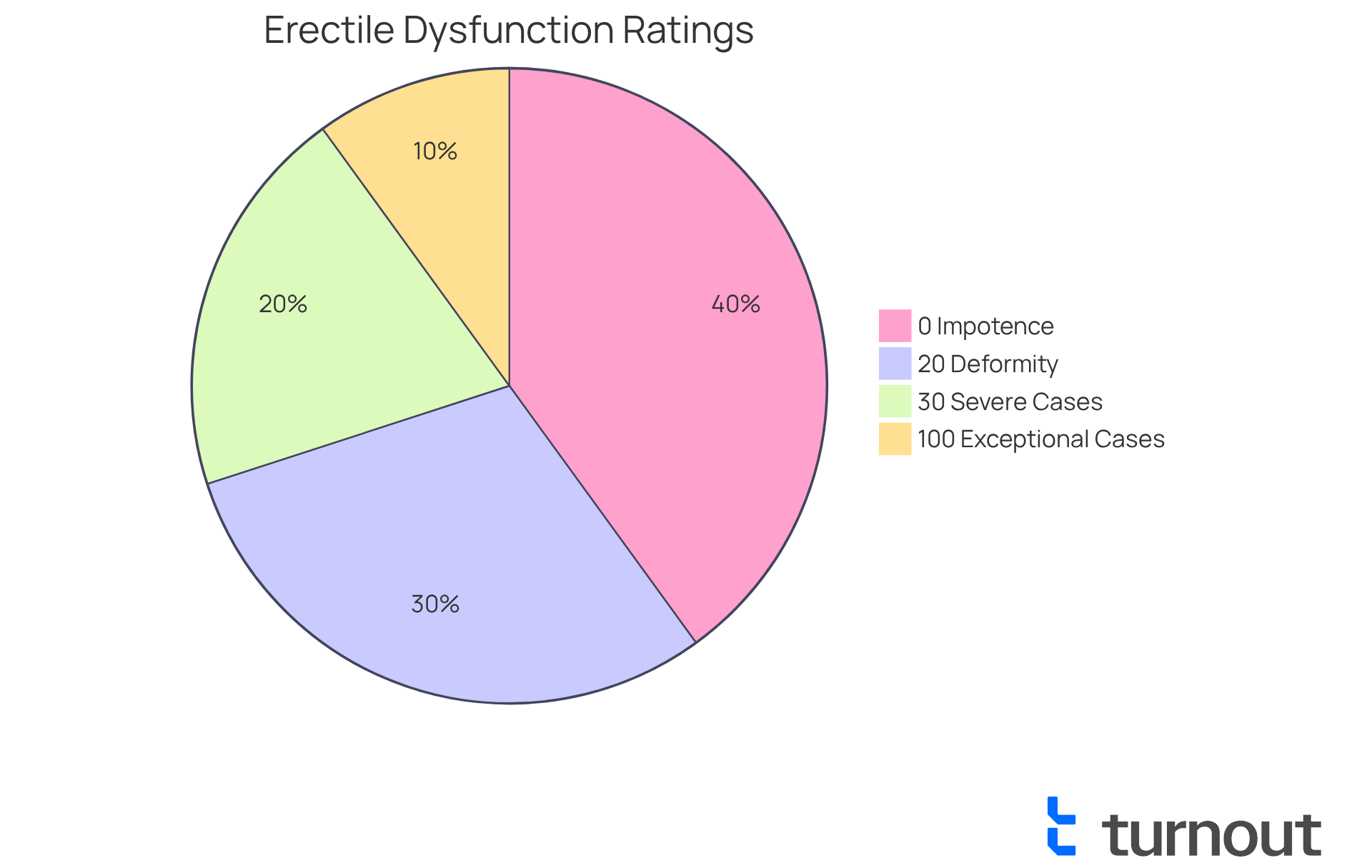
Recognizing Service Connections: How Other Conditions Affect Erectile Dysfunction Ratings
Erectile issues can often be linked to other service-connected conditions, such as diabetes, PTSD, or injuries sustained during service. We understand that navigating these challenges can be overwhelming. If you or someone you know can demonstrate that their sexual health issue is related to these conditions, it may lead to a higher erectile dysfunction VA rating. This interconnectedness is crucial for former service members to recognize.
It's common to feel uncertain about how these factors affect your overall compensation and benefits. Remember, you are not alone in this journey. Understanding how these issues relate can significantly impact your support and resources. We're here to help you through this process.
Debunking Myths: Common Misconceptions About Erectile Dysfunction VA Ratings
Many veterans face misunderstandings regarding VA ratings for sexual health issues, and we understand how challenging this can be. One common myth is that a 0% rating means no compensation. However, it’s important to know that individuals with military service may still qualify for Special Monthly Compensation (SMC) even with a 0% rating. Another misconception is that erectile dysfunction VA rating cannot be linked to service-connected conditions, which is simply not true.
Grasping these myths is crucial for former service members as it empowers them to seek their entitlements with confidence. You are not alone in this journey. Turnout offers valuable tools and services designed to assist veterans in navigating the VA rating process. We’re here to ensure you have the support needed to address these misconceptions effectively.
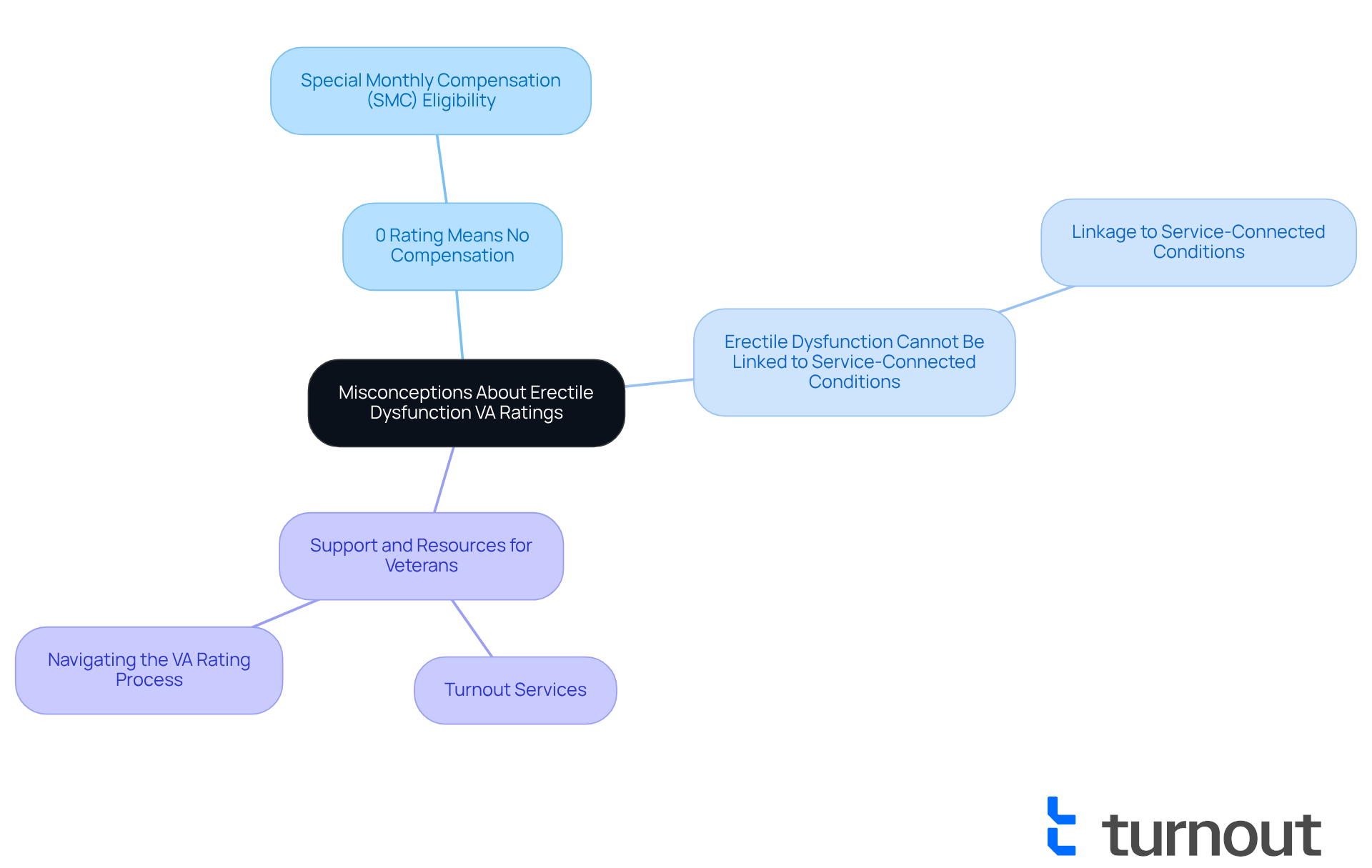
Resources for Veterans: Support and Advocacy for Erectile Dysfunction Claims
Veterans seeking assistance with erectile dysfunction VA rating can find a wealth of valuable resources. We understand that navigating these challenges can be overwhelming, but there is support available to you.
- Turnout's advocacy platform offers personalized assistance tailored to your needs, including guidance on managing service charges and government fees related to your requests.
- The VA's official website provides comprehensive information about benefits and the application process.
- Veteran service organizations are there to guide you through the application process, although some may experience backlogs or training issues.
- Online forums and communities allow former service members to share experiences, advice, and encouragement with one another.
It's crucial to engage certified advocates for help with your applications. Remember, it is illegal for anyone to charge you for preparing a preliminary VA benefits request. The VA is committed to keeping you informed about deceptive schemes, ensuring you can recognize potential scams while seeking assistance.
By leveraging these resources, along with Turnout's expert guidance and electronic communication options, you can significantly enhance your ability to navigate the claims process effectively. You're not alone in this journey, and we’re here to help you receive the support you deserve.
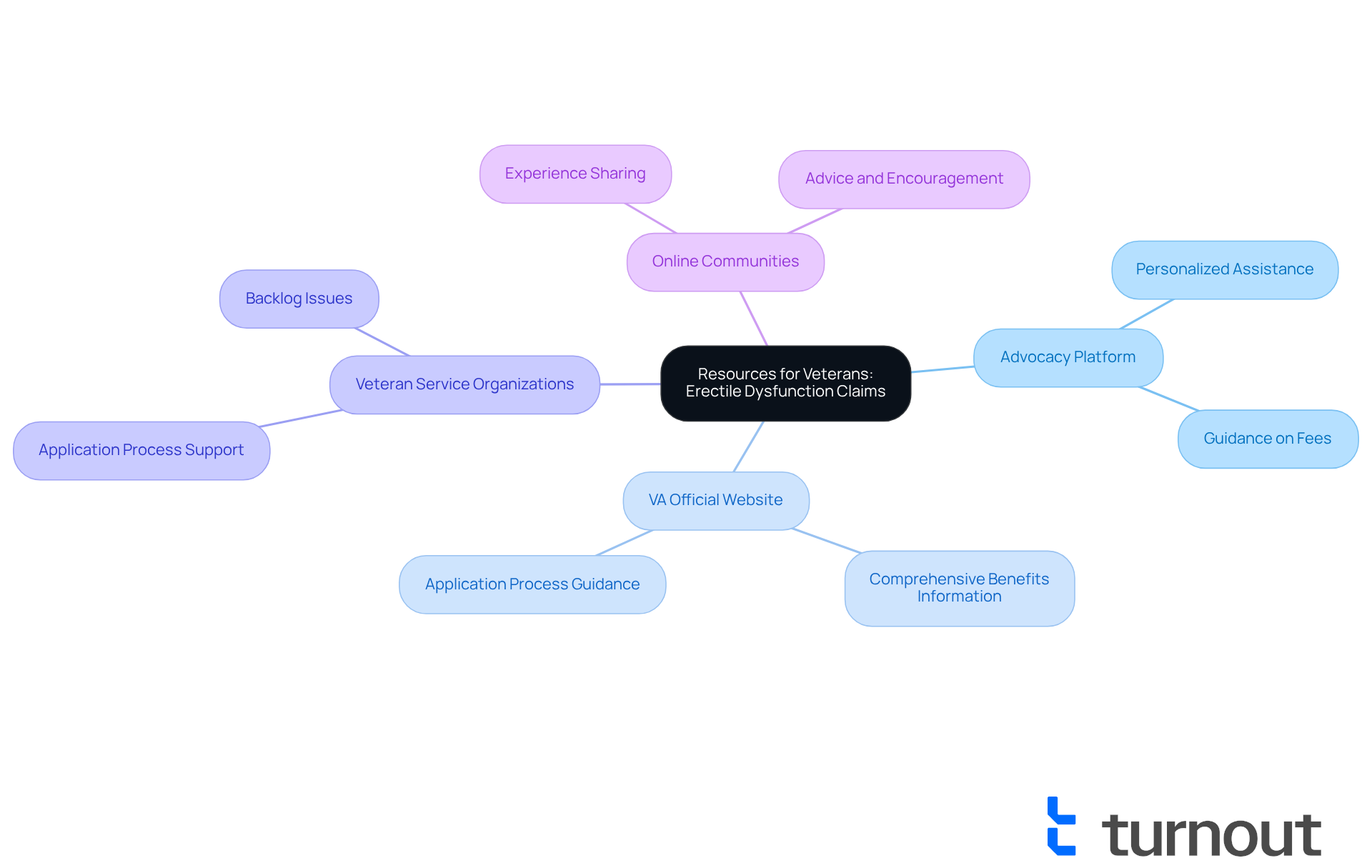
Conclusion
Navigating the complexities of obtaining an erectile dysfunction VA rating can feel overwhelming for veterans. We understand that the application process, the criteria for ratings, and the importance of establishing service connections may seem daunting. However, it's essential to know that you deserve the benefits you have earned. This article has emphasized the value of leveraging resources like Turnout, which offers tailored support to simplify the claims process and empower you on your journey.
Key insights include the critical role of medical documentation in connecting erectile dysfunction to military service. It's important to know that there is potential for increased ratings when linked to conditions like PTSD. We also addressed common myths surrounding VA ratings, reassuring you that even a 0% rating can qualify you for additional compensation. By staying informed and proactive, you can navigate the claims process more effectively and enhance your chances of receiving the support you need.
Ultimately, you do not have to face the journey to obtaining an erectile dysfunction VA rating alone. By utilizing the resources and support available, you can advocate for your rights and ensure access to the benefits you have earned through your service. Remember, persistence and knowledge are key; understanding the nuances of the VA system can significantly impact the outcome of your disability claims.
Frequently Asked Questions
What is Turnout and how does it assist former service members?
Turnout is a platform that streamlines the process of applying for VA disability benefits related to erectile dysfunction. It utilizes AI technology to simplify the application process, providing tailored support and prompt updates to help former service members manage their VA requests more efficiently.
Does Turnout provide legal advice for VA disability claims?
No, Turnout is not a law firm and does not provide legal advice. Instead, it offers assistance through trained nonlawyer advocates to help veterans with their claims.
What is the VA disability rating criteria for erectile dysfunction?
The VA evaluates erectile dysfunction under Diagnostic Code 7522, typically assigning a rating of 0% unless there is a physical deformity or other qualifying conditions. Veterans must demonstrate that their erectile dysfunction is connected to their military service to be eligible for benefits.
How does PTSD relate to erectile dysfunction in veterans?
Erectile dysfunction is often recognized as a secondary condition linked to post-traumatic stress disorder (PTSD). Many male combat veterans with PTSD report experiencing erectile issues, which can potentially lead to higher compensation if linked effectively to their service-related mental health conditions.
What is the significance of a nexus letter in VA disability claims for erectile dysfunction?
A nexus letter provides medical evidence linking erectile dysfunction to PTSD or other service-related conditions. It is crucial for veterans seeking to demonstrate that their erectile dysfunction is connected to their military service, which can support their claim for a higher disability rating.
What resources does Turnout offer to help veterans with their claims?
Turnout offers tools and services designed to assist former service members in understanding and navigating the complexities of the VA claims process, ensuring they receive the benefits they have earned.
Can veterans increase their disability rating for erectile dysfunction related to PTSD?
Yes, veterans who can show that their erectile dysfunction is a secondary issue related to PTSD may qualify for a higher disability rating, especially with strong medical evidence linking the two conditions.




